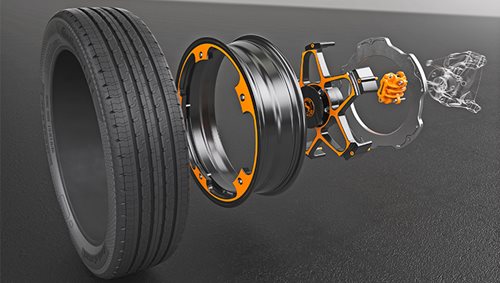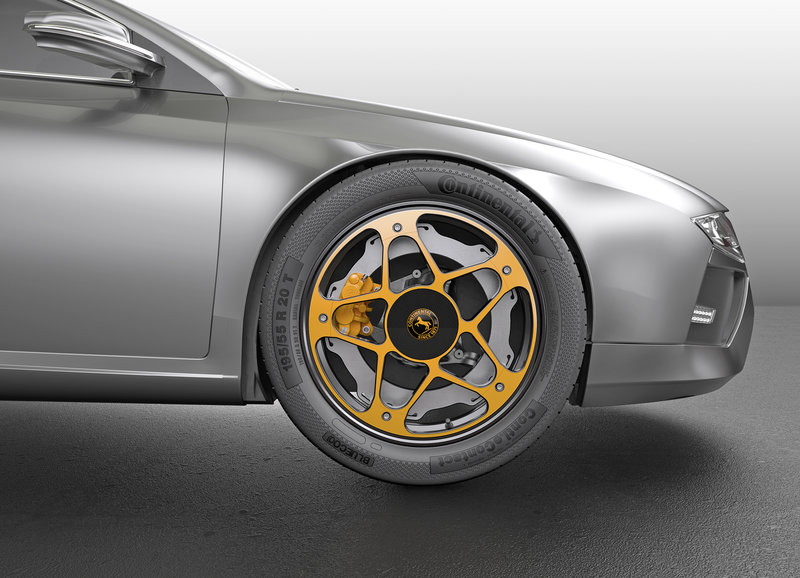Continental, a company known for making tires has a new concept to the age old invention, the wheel and of course in more modern times, the brakes. This is in particular for electric cars. The new wheel rim consists of two aluminium (Al) parts, the inner Al start shaped with the Al brake disk and the outer Al rim with the tyre on it.
The new wheel rim consists of two aluminium (Al) parts, the inner Al start shaped with the Al brake disk and the outer Al rim with the tyre on it. The brake engages the Al disk from the inner portion of the rim but this provides a larger surface area in which the brake pads are in contact with thus increasing braking performance.

To increase the vehicle’s range, deceleration in the EV generates as much electricity as possible through recuperation (= braking using the electric motor), so the wheel brake is used less frequently. The corrosion-free Al brake disk also prevents the formation of rust (as is normal on cast-iron disks) which can impair the braking effect.
“Electromobility needs new solutions for braking technology too,” says Matthias Matic, Head of Continental’s Hydraulic Brake Systems Business Unit. “Using conventional brakes is not very effective in this case. The New Wheel Concept meets all the demands that electric driving places on the brake. We used our braking know-how to develop a solution that provides a consistently reliable braking effect in the electric vehicle.”
Thanks to the lightweight material such as lightweight aluminum, it reduces the weight of the wheel and brake, enabling lightweight construction in EVs. Advantages of the concept are much easier wheel and brake pad changes and that the disk is not subject to wear.
“In EVs, it’s crucial that the driver expends as little energy as possible on the friction brake,” says Paul Linhoff, Head of Brake Pre-Development in the Chassis & Safety Business Unit at Continental. “During a deceleration, the momentum of the vehicle is converted into electricity in the generator to increase the vehicle’s range. That’s why the driver continues to operate the brake pedal – but it certainly doesn’t mean that the wheel brakes are active too.” The deceleration torque of the electric motor is only no longer sufficient by itself when the driver brakes more energetically, or braking also has to carry out with the non-driven axle for driving dynamics reasons. The wheel brake is needed in this situation – and it must be available. “Drivers want to be able to rely on a consistent braking effect – and too much rust on the brake disk, in particular, can really make this difficult,” Linhoff emphasizes. The reason behind the reduced performance is less friction between the brake pad and the brake disk. The automatic emergency braking function also has to fully rely on the availability of the friction brake effect.
[Souce: Continental & ArsTechnica]
Follow us on Instagram, Facebook, Twitter or Telegram for more updates and breaking news.


